SKINAMARINK (2022)
Two children wake up in the middle of the night to find their father is missing, and all the windows and doors in their home have vanished.
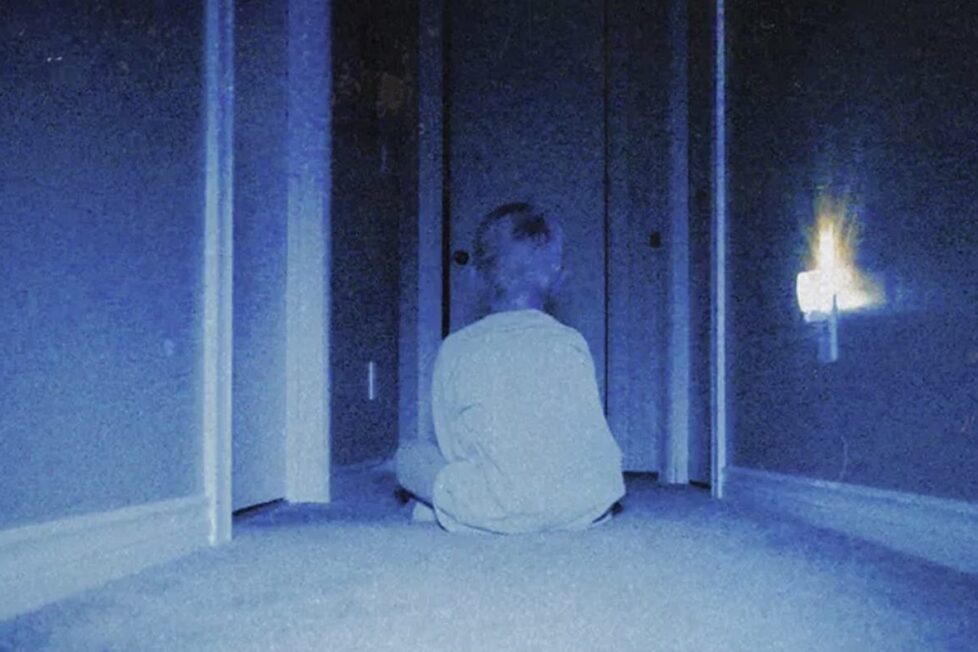
Two children wake up in the middle of the night to find their father is missing, and all the windows and doors in their home have vanished.


Every room looks the same in the dark. It doesn’t matter where in a house it is, or even which house it’s in. Whatever properties it takes on when the sun is out, it loses when night falls, when the lights go off, and when windows seem to disappear. But as much as it loses its shape, it gains a new version of itself in the shadows, where it can shrink, widen, or oscillate—depending on how well-adjusted your eyes are. For children, these changes are more dramatic. I remember the television in my childhood bedroom, with the angle of its glass screen reflecting strange images of the darkness where I lay and a warped version of the hallway outside my door. Some nights I’d sit looking at this reflection until thinking I saw something move, while other nights the empty space scared me so much I’d have to close my door.
Such are the terrors of Skinamarink, a new indie horror from Kyle Edward Ball, making his feature-length directorial debut. As a work that toes the line between arthouse experimentalism and lo-fi creepypasta horror, Skinamarink is sure to flummox and fascinate in equal measure. Already achieving word-of-mouth virality that generated substantial press attention, regardless of one’s feelings about the film, it’s exciting that a horror film made for $15,000 and with genuine artistic merit is scaring up so much attention.
As with the recent sleeper hit Terrifier 2 (2022), there is always hope amongst horror audiences that the success of an independent genre film will pave the way for more of its kind. That remains to be seen, but the response to Skinamarink is nonetheless heartening, and the film certainly earns its reputation as a frightening and singular experience.
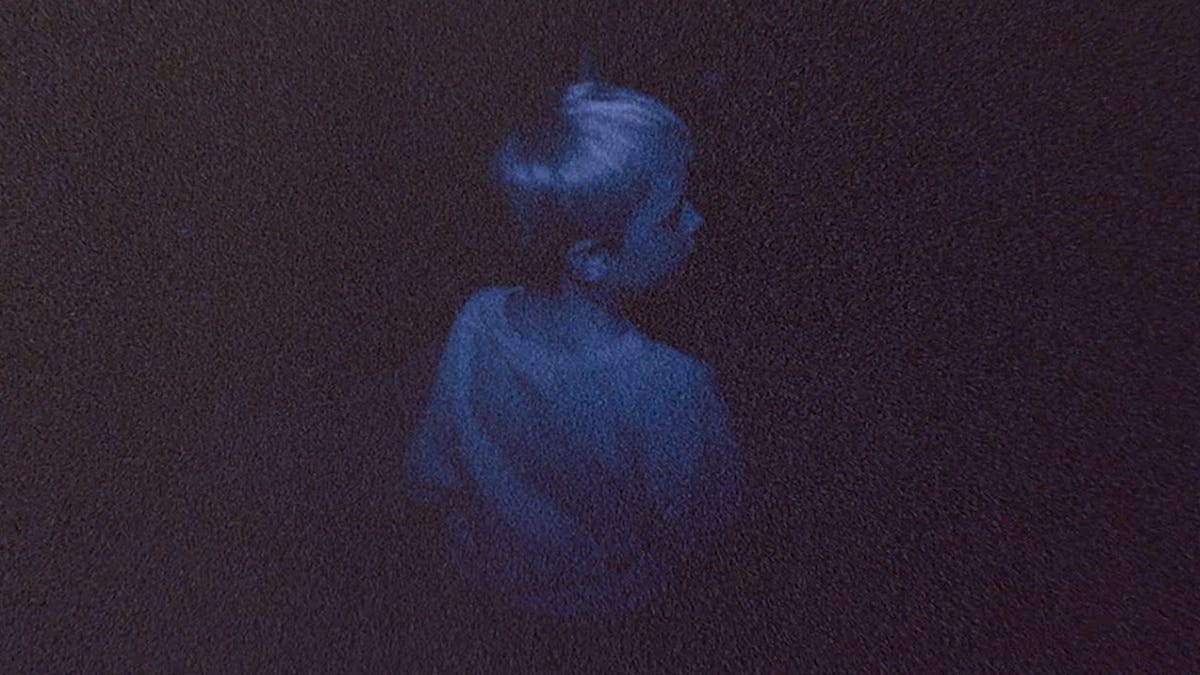
Something very wrong is happening at home in Skinamarink. The house is wrong, the people are wrong, and the way it’s captured is thoroughly, jarringly wrong. Static images of doorways, hallways, ceilings and corners follow each other in a disjointed montage, places behaving like a sheet of paper cut into a thousand pieces and impossible to reassemble. When people walk through these frames, they don’t have faces; the camera cuts them off at the neck, or the darkness entirely obscures them. When they talk, it’s in non-sequiturs, captured with a bass-heavy artificiality, recalling the onboard microphones of old home movie cameras. People are lost not only in the darkness but in the intense grain of the camera, trapped in space and digital noise.
Context clues provide some basic information: two children called Kevin (Lucas Paul) and Kaylee (Dali Rose Tetrealt) live here with their father (Ross Paul) and possibly their mother. Kevin recently fell down the stairs and injured himself. “Sleepwalking,” the father’s disembodied voice suggests. The children whisper to each other, subtitles providing the words that are lost to the ambience of the room. They are watched over by a CRT TV (events are set in 1995, a title card tells us) which plays an endless loop of old public domain cartoons, the glow from the screen being artificial, sickly, and strangely comforting. In its flickering, it has something of a hypnotic effect, as if it’s a pacifying force through which darker elements can escape into the house.
Dull thuds come from the ceiling, above which dad’s room sits. Odd-angled shots of walls and ceilings are swathed in red or blue light, cleverly turning the RGB colour range of the TV into a disseminating force, spraying its insides into the house. In moments of blunt editing, the windows and doors of the home disappear. Jumbled voices emit from the darkness; the kids, too frightened to even go to the bathroom, fall asleep in front of the TV. “I love you,” they tell each other.
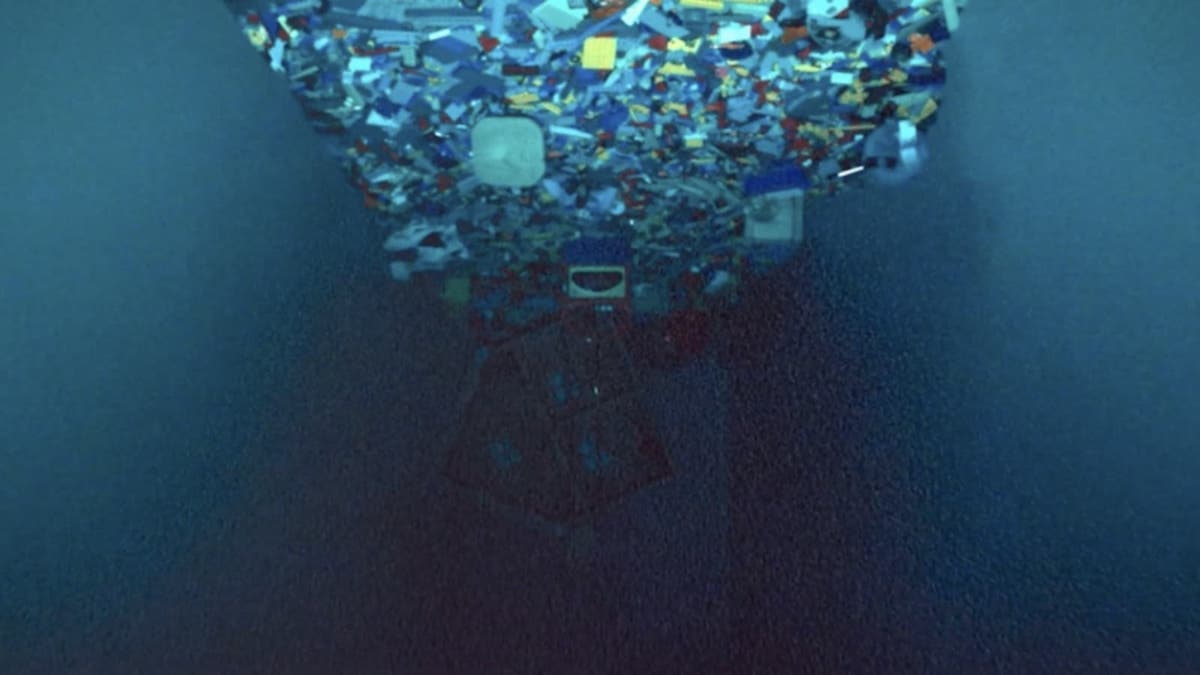
Kyle Edward Ball trains us to watch closely, to look into the enveloping darkness until we almost can’t bear the quiet and stillness. He cuts with a slow and deliberate rhythm and moves his camera sparingly. We become installed in these rooms like security guards, or, if we’re to follow the cycling shots of different rooms, perhaps the viewer is more like a security camera. But the horrifying fact persists that nothing here is safe, preventable, or predictable. In the mire of the unknown, the children’s voices become truly alien and isolated. The vulnerability with which they speak is contagious. The sense of aloneness is disarming, but even more troubling is the idea that they, we, are not alone, that something is going on upstairs. Ball relishes making the audience feel like lost and frightened children again.
When the father’s voice calls the children to his room, it sounds ominous; when we see him with his back to the camera, sitting on the edge of his bed and telling them to “look under the bed”, it’s terrifying. Ball leads the viewer through this sequence in first person, which further instils the total lack of agency that children have, and that you as a viewer have—you have to do what your parents say, even when they aren’t acting like your parents anymore.
The slowly eroding images look as if they could crumble at any moment, as memories played on a loop until they lose their colour and shape. One wonders if E. Elias Merhige’s Begotten (1989) was an influence, but if that film’s images took on a distancing ugliness, then Skinamarink trades in images of the familiar made unfamiliar. The family home is of course a well-explored source of cinematic horror, and Ball doesn’t shy away from potential influences.
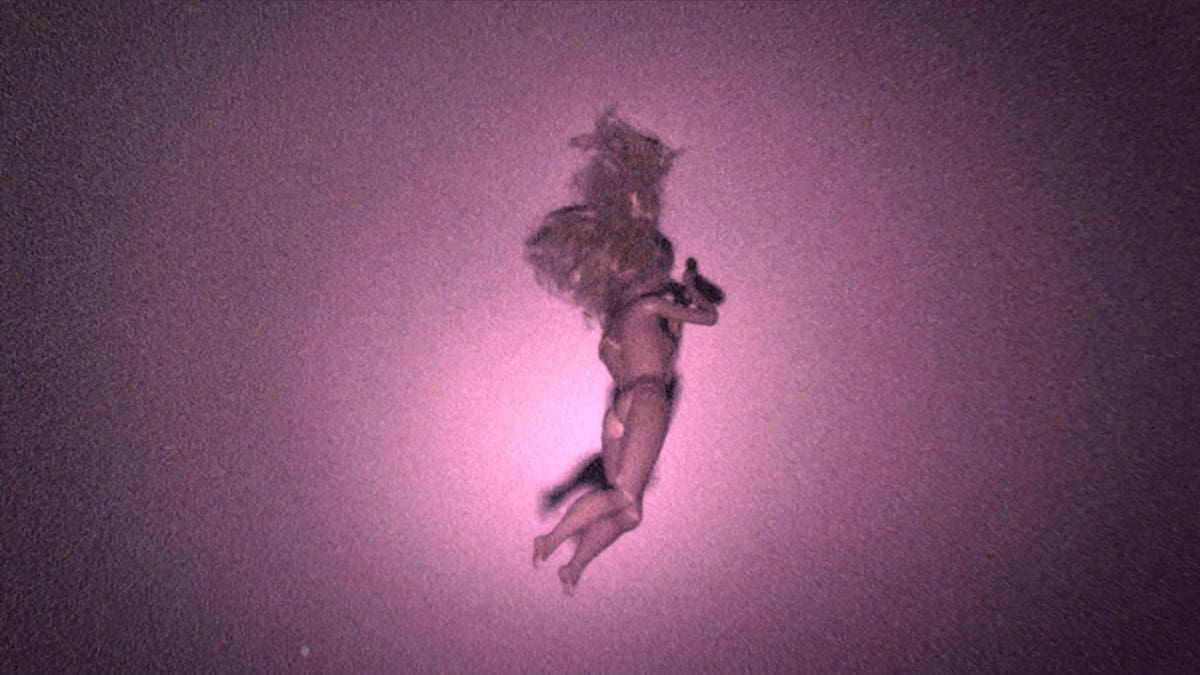
In its foregrounding of televisual threat, the film evokes Poltergeist (1982), while the metamorphosis that ordinary household objects undergo to become sinister onlookers matches the dread-inducing shots of the Palmer house in Twin Peaks (1990-91). Even more unexpected is the film’s evocation of Paranormal Activity (2007) and Unfriended (2014), particularly in its unblinking long takes. But it’s perhaps Lake Mungo (2008) that it shares most of its DNA. In its clever manipulation of ordinary domestic images, it forges an almost hand-crafted aesthetic idea that brings to light how a film’s construction can be as terrifying as its content.
Skinamarink feels haunted. Over the last decade, accounts across Twitter and Instagram have popped up under names like ‘cursed images’. These are entertaining pages made up of typically analogue photos that are unintentionally scary; photos of freakish kids’ mascots, out-of-context animation frames, or bizarre homemade costumes. With these accounts, it’s as much an aesthetic rendering of these subjects that intrigues as much as anything else. They’re typified by disposable camera flashes and outdated home décor. And, perhaps owing to its essentially obsolete format (film), the images take on the strange markers of being from another time, perhaps when things were less certain, or less safe. The format becomes ingrained in an overall mood; Skinamarink feels as if it is itself a cursed object. It’s a stretch of time (the 1990s) and a collection of signifiers (old televisions, fisher price toys) warped horribly through a junky old camera, playing to a long-held but irrational belief: that all the things you were frightened of when you were a child were real.
However, Skinamarink’s visual language is more subtle and intangible, stirring a deep disquiet often through the absence of horror visuals. Much of the experience is spent waiting in dread while one of the kids climbs the stairs, or while staring at a ceiling. When Ball does deploy more conventional horror tricks, they are immensely successful—-the harsh distorted noise of a toy phone or screaming—offer jolts that refuse to let you sink into Skinamarink’s careful rhythm.
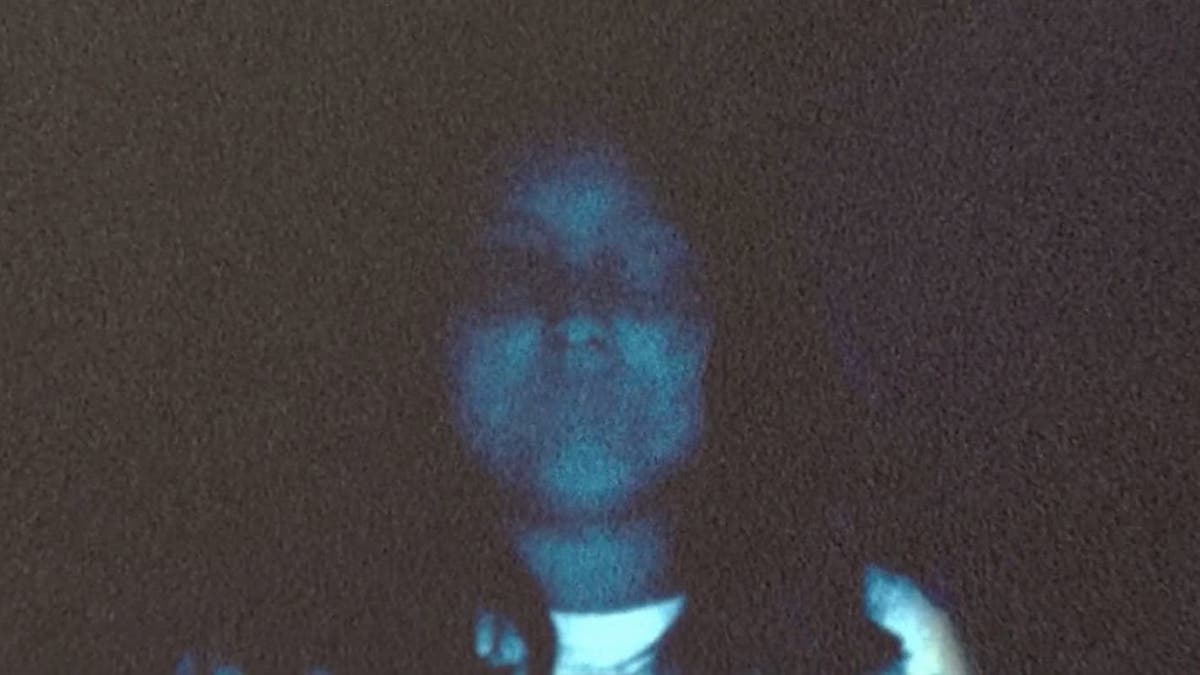
The elusive structure of the house becomes harder to navigate as things progress, and voices from the darkness call out cruel, violent demands. Household objects float in midair as if they are glitches, and somewhere amongst this we realise we’re hopelessly lost. This is by design: Kyle Edward Ball has essentially constructed a modern fairy tale. In a twist of folkloric characters who become lost far away from home, Skinamarink finds us lost inside the home. There are no breadcrumbs, and the big bad wolf is whatever watches and whispers in the dark. It might even be a parent. He weaponises nostalgia, offering it up as a poison apple. Here are the signifiers of your childhood, and here is the truth behind them—the things you tried to forget.
Ball’s repeated focus on a lego house feels particularly significant. It is lit by the television screen, which is more like a movie screen from the perspective of the toy home. It often feels like a lonely image—a house without people. And what is the ever-changing house of Skinamarink if not a large-scale version of this lego house? Its windows can be removed, its walls changed, and whoever lives in it is at the whim of whoever controls it, an innocent plaything being moved ever forward towards danger.
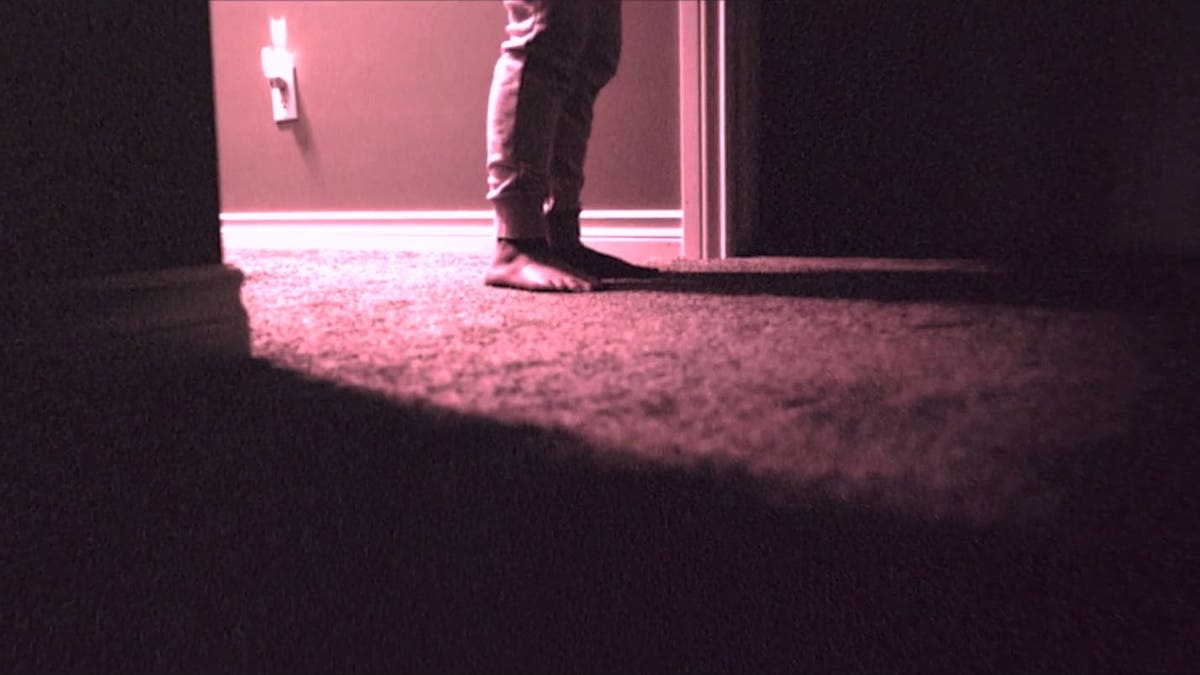
Here, the children are the playthings. It is deeply moving when we hear the younger of these kids, Kevin, call the police. It is the most literal sequence in the film, and the boy doesn’t know how to explain what’s happening. The man on the other end of the line convinces him to keep talking to him, calling him ‘sweetheart’ in a detail of warmth that’s devastating. It’s in this sequence that Skinamarink reveals itself to exist in something similar to our world when the toy houses and fairy tale notions disappear. And this in turn imbues the film with deep sadness, before returning again to the dark corridors where nothing good lives. The moment of humanity and potential salvation feels more alien as things become unmoored in the darkness once again.
As a viewer, Skinamarink demands one surrender to the darkness. It requires close attention, silence, and no distractions. It is best watched with headphones, in complete darkness. It’s in this set-up that your eyes play tricks on you, where you’ll be convinced that you’re just as unlikely to leave this place as the children are. Kyle Edward Ball tangles up memory, video, and nightmares into an inescapable spool, a whispered-about haunted artefact that feels like contraband.
It mimics the sensation of staying up late as a child and finding something you shouldn’t be watching, some broadcast from another place. But even more upsetting is that feeling when the TV goes off, when there is only the reflection of hallways and darkness. Skinamarink shows us a house like any other house, but when you see its reflection, its inhabitants become ghosts and monsters. Which version is real is clear only until the moment that the lights go out again.
CANADA | 2022 | 100 MINUTES | 2.39:1 | COLOUR | ENGLISH

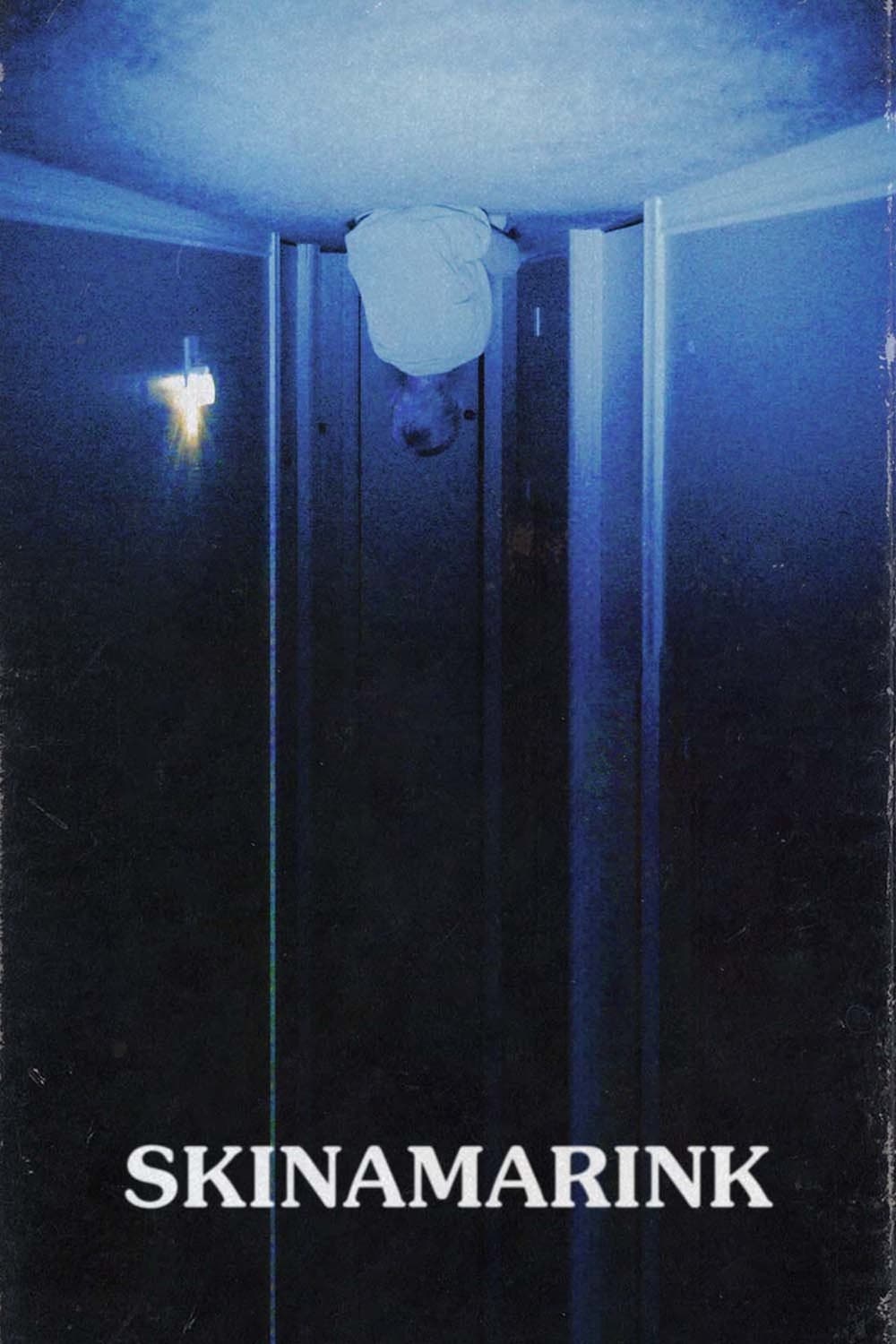
director: Kyle Edward Ball.
writer: Kyle Edward Ball (based on ‘Heck’ by Kyle Edward Ball).
starring: Lucas Paul, Dali Rose Tetreault, Ross Paul & Jaime Hill.
